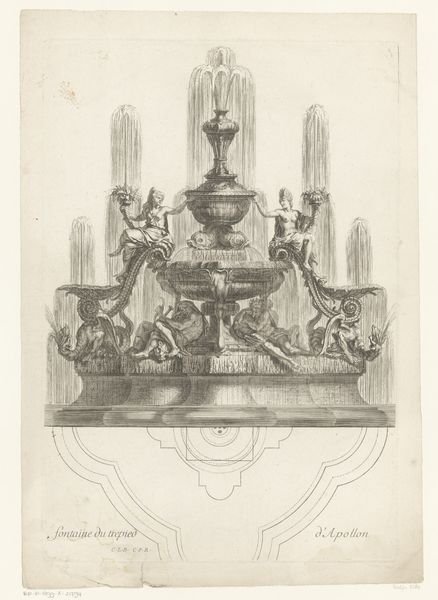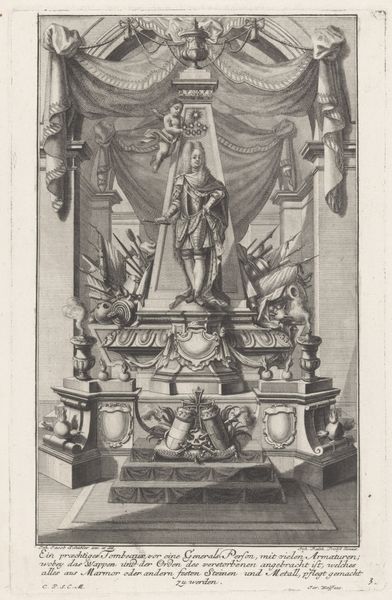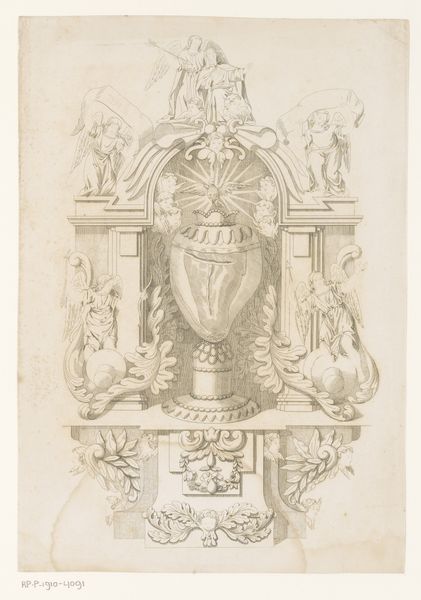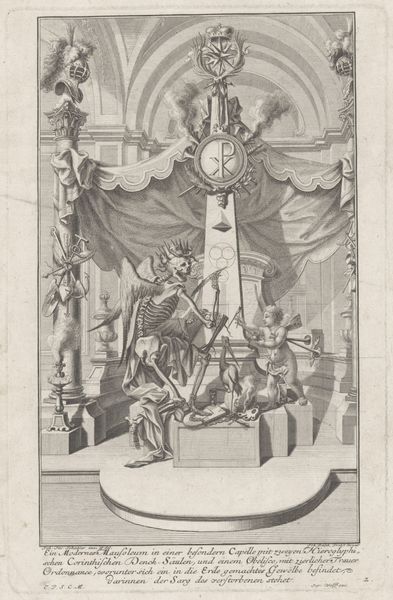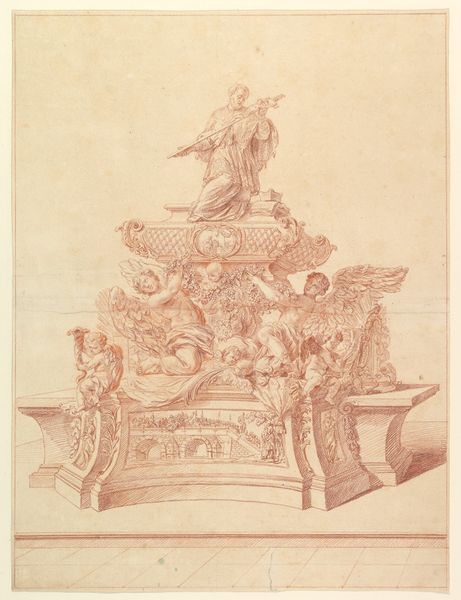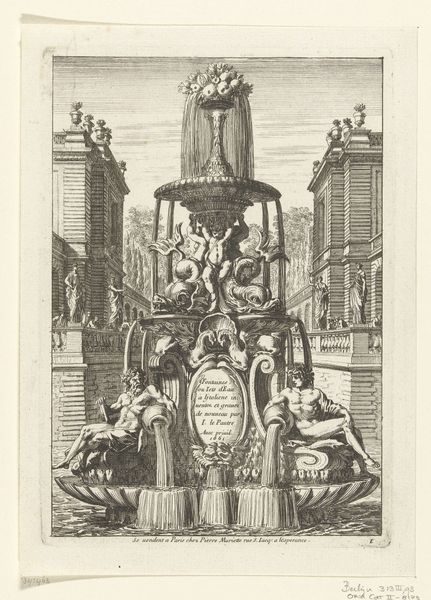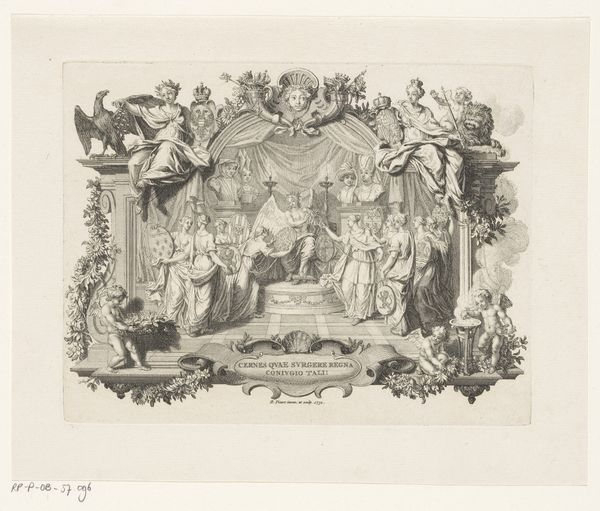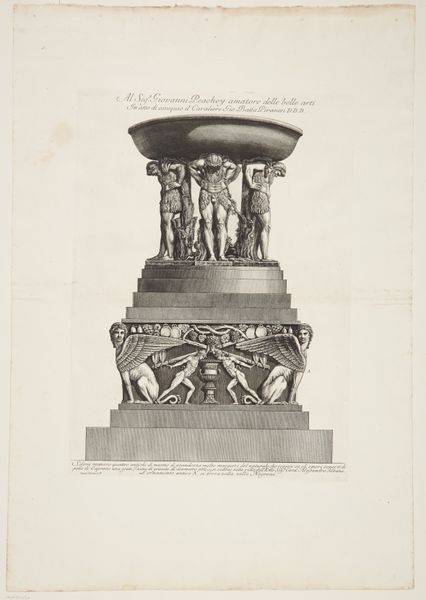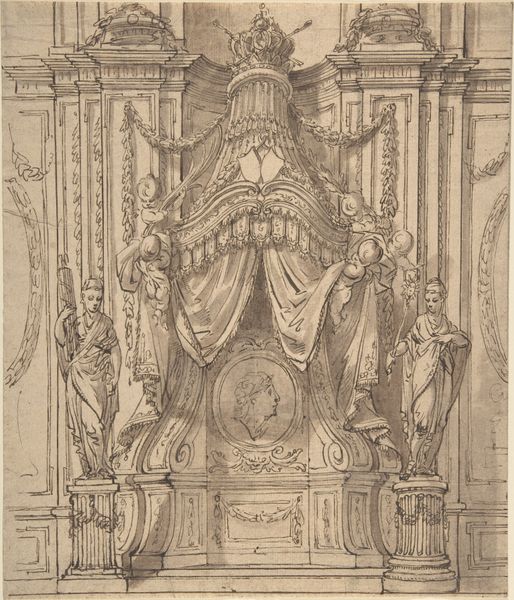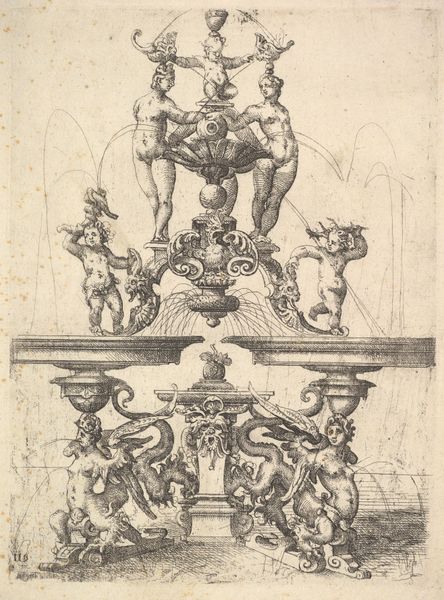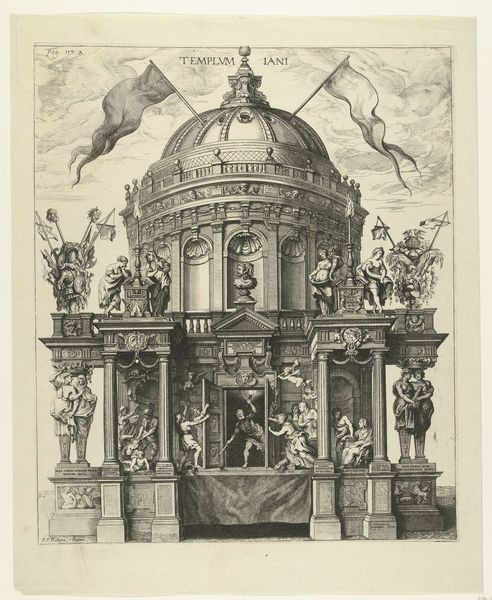
print, engraving, architecture
#
baroque
# print
#
old engraving style
#
cityscape
#
engraving
#
architecture
Dimensions: height 435 mm, width 288 mm
Copyright: Rijks Museum: Open Domain
Curator: Looking at "Fountain of the Four Continents", a print crafted between 1672 and 1686 by Louis de Châtillon, now residing at the Rijksmuseum. Editor: It evokes such a potent sense of power, almost a staged drama rendered with incredibly fine lines. Is it an architectural drawing, perhaps? Curator: Indeed, it is a meticulously detailed rendering of a planned baroque fountain. Note the four figures, representing each continent known at the time, adorned with their respective attributes. These figures symbolize a very specific worldview. Editor: Yes, and the symbolism leaps out. Europe, I imagine, is the figure adorned with... what is that? A helmet and a shield? There’s a subtle, perhaps unintentional, implication of dominance encoded within the composition, wouldn't you agree? The piece, beautiful though it is, seems rife with colonial overtones. Curator: Precisely! The arrangement certainly speaks volumes about the era’s understanding of global power dynamics. Notice how the water flows, originating seemingly from the figures and cascading down, giving life and prosperity, visually tying into European opulence. There is much loaded symbolism. The fountain’s water, an age-old signifier of life, abundance, and purification is shown being "gifted" from those continental figures, thus cementing the "natural" order of dominance. Editor: Water as a colonial gift! An interesting argument about imbuing supposed purity and civilized culture. We're viewing this print today in a radically different social and political context, where we examine and critique such historical expressions of power. How do we engage with this piece ethically? Is there an implied narrative about "civilizing" other continents through European influence, even violence? Curator: Well, the enduring power of symbols rests in their ability to retain historical meaning while accumulating new ones. By studying this print, we witness a confluence of artistic mastery and complex historical messaging, sparking, as you pointed out, much-needed dialogue. Editor: Yes. Engaging with art, especially historical art, critically allows us to understand where we've come from to shape where we're headed. This fountain is certainly brimming with dialogue.
Comments
No comments
Be the first to comment and join the conversation on the ultimate creative platform.
